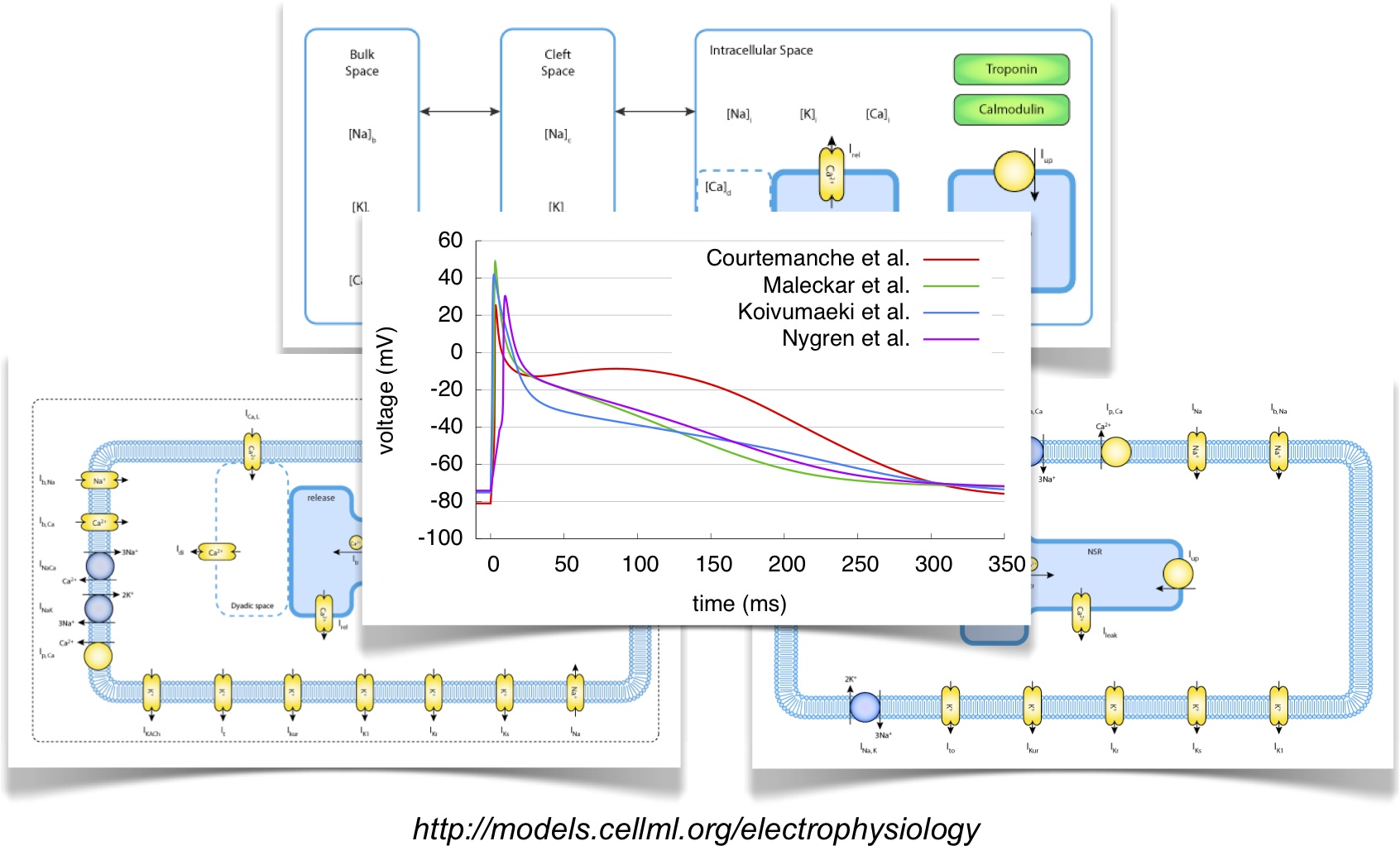Benchmarking Electrophysiological Models of Human Atrial Myocytes
- Forschungsthema:Herzmodellierung, Simulation
- Typ:Bachelorarbeit
- Betreuung:
- Bearbeitung:
-
Atrial fibrillation (AF) is the most common cardiac arrhythmia affecting approximately 1% of the population. The mechanisms responsible for this pathology are still incompletely understood. One reason for this is that some of the properties of the atrial tissue can hardly be investigated, e.g. invasively. Therefore, computer models of the human atrial electrophysiology are helpful tools to better understand the underlying mechanisms of AF.
In recent years, several mathematical models of the human atrial electrophysiology were developed and published. In previous works, one of these models was investigated in detail. These analyses showed that this model has some limitations, as e.g. the intracellular calcium handling. Newer models contain a more sophisticated description of this electrophysiological aspect.
The aim of this work is to compare the already investigated model with four other models. For this purpose, different characteristics of the models shall be analyzed. Then, a comparison of the models among each other and with measured experimental data shall be carried out, so that the model, which is best suitable for the simulation of physiological conditions and pathological conditions, like AF, can be determined.

